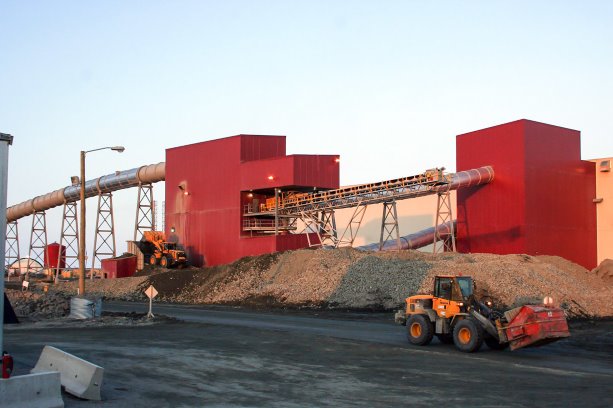A Senate committee has issued a report supporting the creation of a Northern Corridor, a multi-billion-dollar infrastructure proposal to establish a 7,000-kilometre multi-modal right-of-way across Canada’s mid north.
If developed it could unlock resource wealth, transport existing products to market and create a breakthrough in living conditions and opportunities for northern First Nations people.
"The idea is to establish a right-of-way that would accommodate highways, railways, pipelines as well as electrical transmission and communications networks," explained the report, published in June by the Senate Committee on Banking, Trade and Commerce.
The new national corridor would tie into existing infrastructure in southern Canada, said the senators.
The concept — also discussed at the Royal Architectural Institute of Canada’s (RAIC) annual meeting in May — was pioneered by General Richard Rohmer 50 years ago and at age 92 he was on hand at committee hearings held in 2016 to reiterate his views.
Committee chair David Tkachuk of Saskatchewan explained he and Alberta Senator Scott Tannas became enthused by a modern version of the idea contained in a paper published last year by the School of Public Policy at the University of Calgary and the Montreal-based research centre Cirano. They decided it should be brought forward as a committee study.
"The north is not unlivable terrain," said Tkachuk. "It’s very livable. What we need is the kind of political and economic pursuit that (Prime Minister Sir John A.) Macdonald had in 1867. This would be a great way to kickstart, in the 150th year of Canada, the next phase of our development, and that is straight north."
The committee report called for $5 million to be allocated to the School of Public Policy at the University of Calgary to prepare a feasibility study for the project. The authors of the U. of Calgary/Cirano study, Andrei Sulzenko and G. Kent Fellows, appeared as witnesses at the Senate hearings and said the right-of-way would encourage the development of private- and public-sector projects across the country, including Ontario’s Ring of Fire with its estimated $60 billion in chromite and other deposits.
Fellows said the next stage of the research should study construction, financial and land ownership issues. An initial cost estimate covering two phases of construction in the corridor — the first being road and rail, the next being pipeline, electrical transmission and fibre optics — was $100 billion.
Other benefits cited in the Senate report included market diversification, improved approvals processes, enhanced economic growth and job creation and support for northern sovereignty.
"I think if the First Nations are going to be onside right from the beginning, they are going to be onside," said Tkachuk, a Conservative appointed by Brian Mulroney. "If asked after the fact, they are going to get their backs up.
"They see their future tied to resources so it’s good for them."
The report stated, "The First Nations Major Projects Coalition and the First Nations Financial Management Board identified their interest in acquiring an equity stake in major projects as a means of generating a financial return, influencing project-related decisions and mitigating projects’ environmental risks, which is a priority for them."
Tkachuk said he had not heard from the federal government but said he and other senators would aim to schedule meetings with influential government figures in the fall to argue for funding for more study.
Hamilton, Ont.-based architect and planner John van Nostrand also advocated for what he referred to as the Boreal Corridor — following the Boreal forest line across Canada — at a presentation discussing First Nations housing at the RAIC meeting held in Ottawa in May.
Van Nostrand reiterated points he had made in an article he wrote for the Walrus magazine in 2014. Development in the north had been done ad hoc, with entrepreneurs exploiting resources out of temporary settlements and much of the work performed fly-in, fly-out.
Sweden, Finland, Estonia and Russia have proved well-planned communities can thrive in the north. He advocated for comprehensive plans that incorporated indigenous concerns, socio-economic development goals and infrastructure expansion and said such a plan was in place for the nickel community of Thompson, Man., where he had worked.
His Walrus article had listed copper and gold finds in the Yukon, diamonds, oil and gas in the Northwest Territories, British Columbia’s natural gas, Alberta’s oilsands, Saskatchewan’s potash and uranium, Manitoba’s gold and nickel, Ontario’s chromite, copper and gold, Quebec’s copper, hydro and nickel and Newfoundland and Labrador’s offshore oil, cobalt, copper, iron ore and nickel as northern resources to be exploited.
"Seventy-five per cent of our future wealth is in that corridor, in terms of oil and minerals," said van Nostrand. "We should be building a plan for this."











Recent Comments
comments for this post are closed